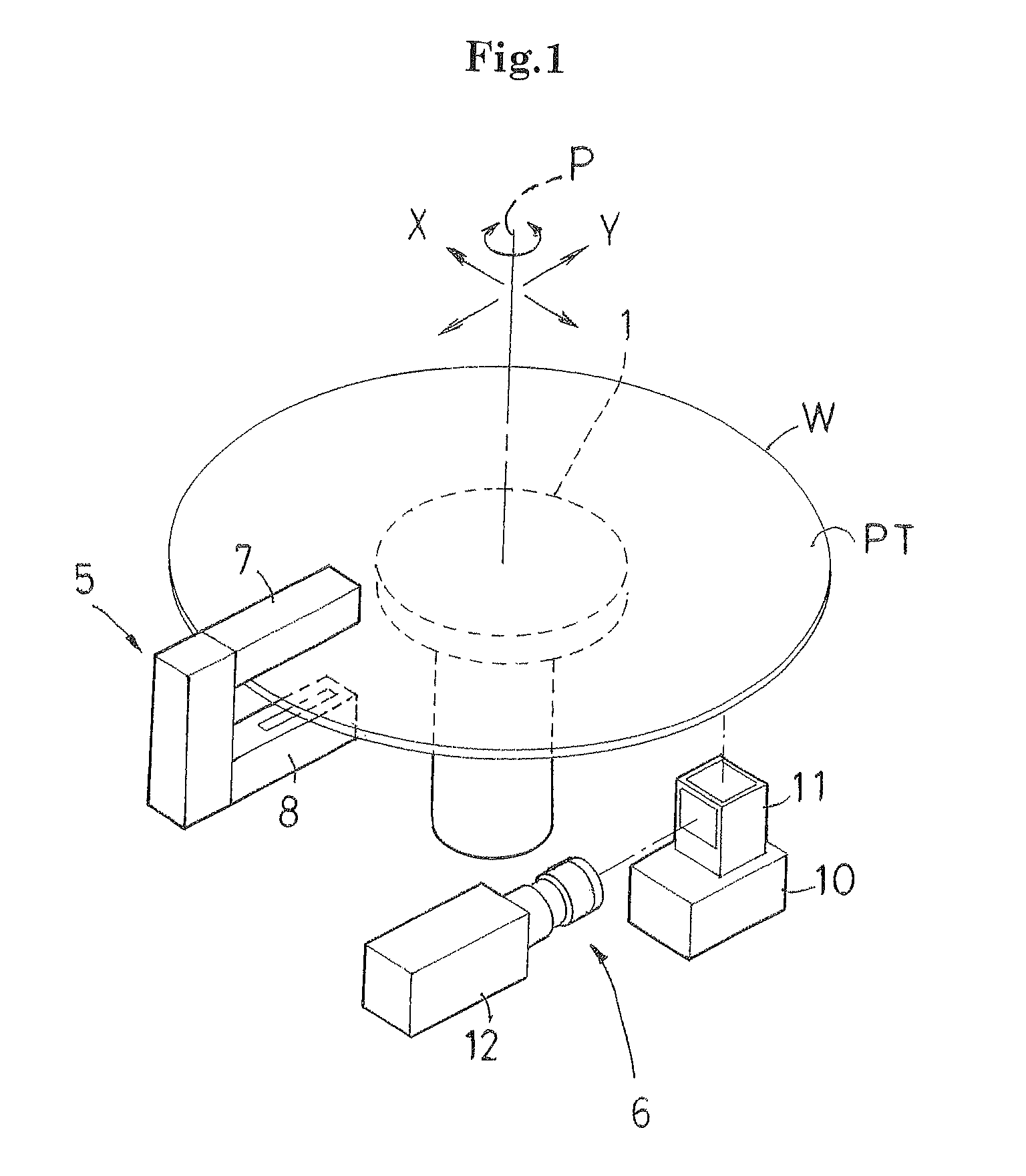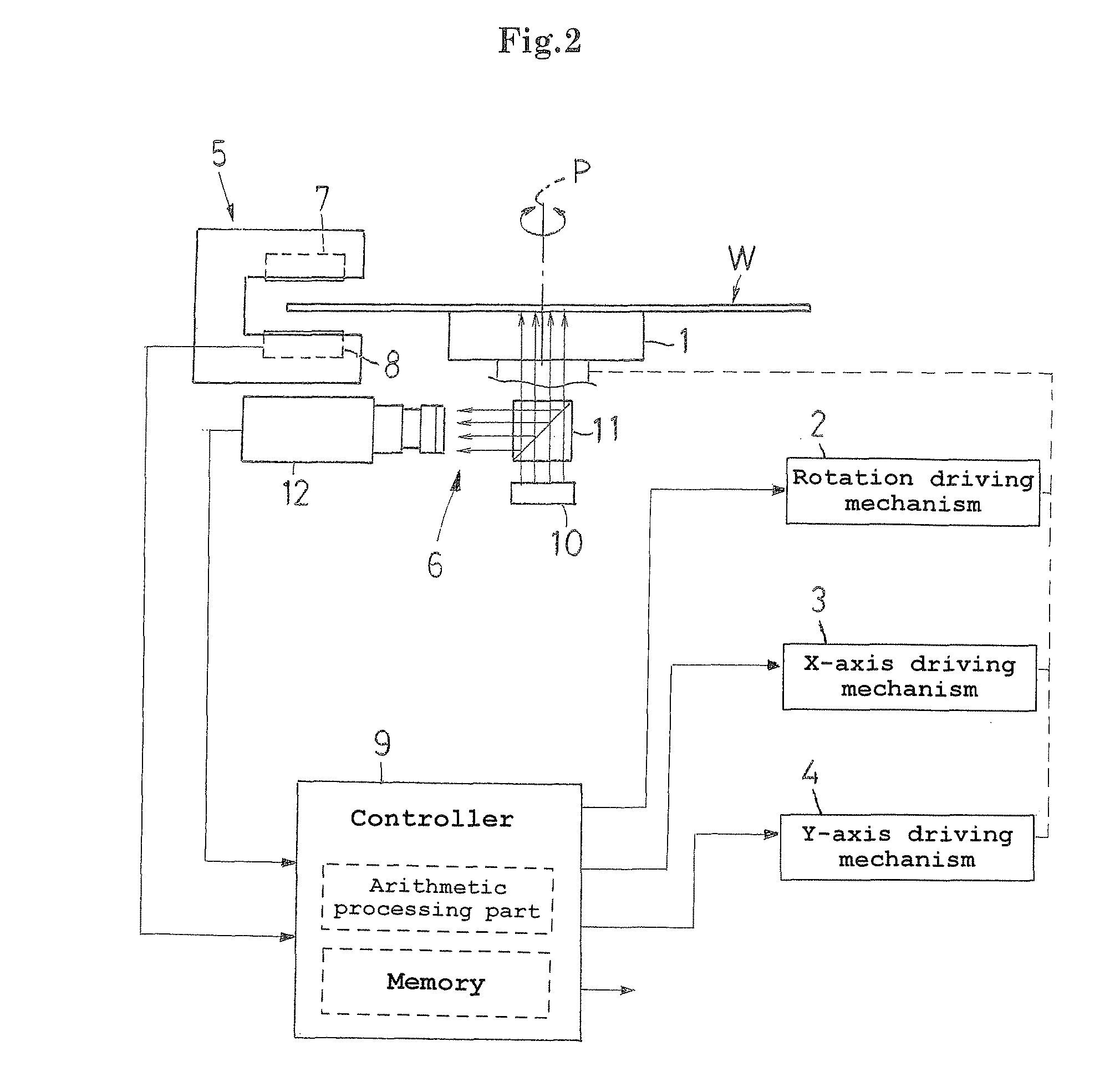Method for joining adhesive tape to semiconductor wafer and method for separating protective tape from semiconductor wafer
a technology of adhesive tape and semiconductor wafer, which is applied in the manufacturing of semiconductor/solid-state devices, basic electric elements, electric devices, etc., can solve the problems of chip or crack, chip or crack deterioration, and high risk of damage to semiconductor wafers, so as to improve yield and less influence of defects
- Summary
- Abstract
- Description
- Claims
- Application Information
AI Technical Summary
Benefits of technology
Problems solved by technology
Method used
Image
Examples
Embodiment Construction
[0034]Hereinafter, description will be given of one embodiment of the present invention with reference to the drawings.
[0035]FIG. 1 is a perspective view showing main components of an aligner for use in alignment of a semiconductor wafer (hereinafter, simply referred to as a wafer) W. FIG. 2 shows a linkup in the aligner. FIG. 5 is a perspective view showing a back face of the wafer W to be subjected to processes. FIG. 6 is a sectional view partially showing the wafer W.
[0036]As shown in FIGS. 5 and 6, the wafer W has a front face on which a circuit pattern is formed, and a protective tape PT is joined to the front face. In this state, a back face of the wafer W is subjected to grinding, and then a metal layer M is deposited on the back face. Accordingly, the metal layer M is also deposited on the bared protective tape PT at a portion corresponding to a notch K formed as an alignment site at an outer periphery of the wafer W.
[0037]As shown in FIGS. 1 and 2, the aligner is rotatable ...
PUM
 Login to View More
Login to View More Abstract
Description
Claims
Application Information
 Login to View More
Login to View More - R&D
- Intellectual Property
- Life Sciences
- Materials
- Tech Scout
- Unparalleled Data Quality
- Higher Quality Content
- 60% Fewer Hallucinations
Browse by: Latest US Patents, China's latest patents, Technical Efficacy Thesaurus, Application Domain, Technology Topic, Popular Technical Reports.
© 2025 PatSnap. All rights reserved.Legal|Privacy policy|Modern Slavery Act Transparency Statement|Sitemap|About US| Contact US: help@patsnap.com



